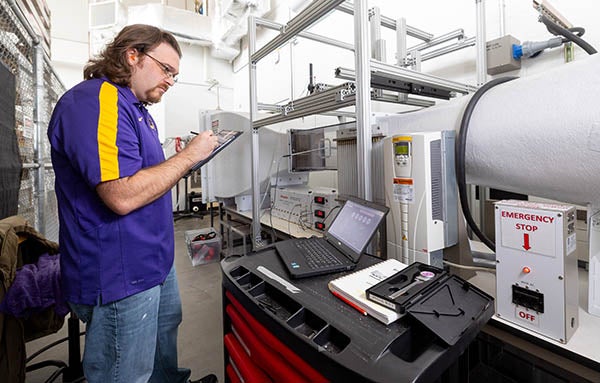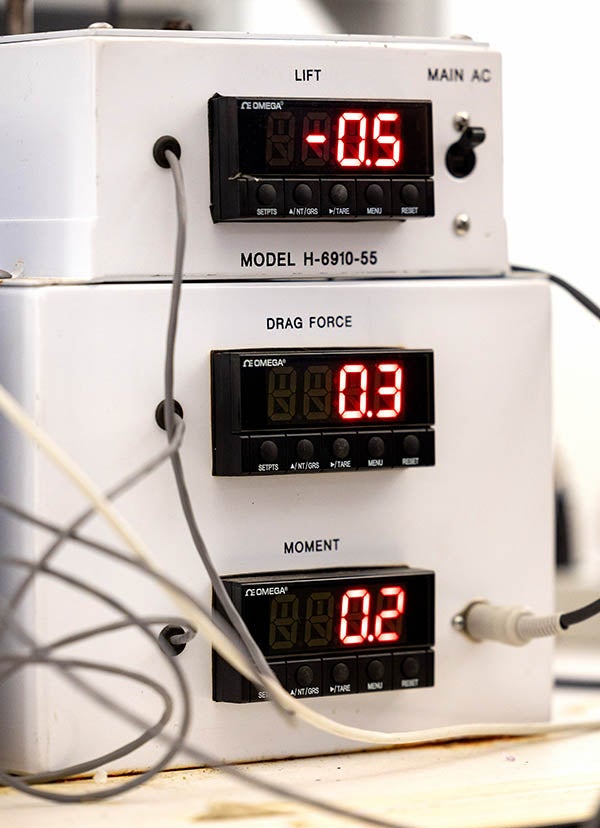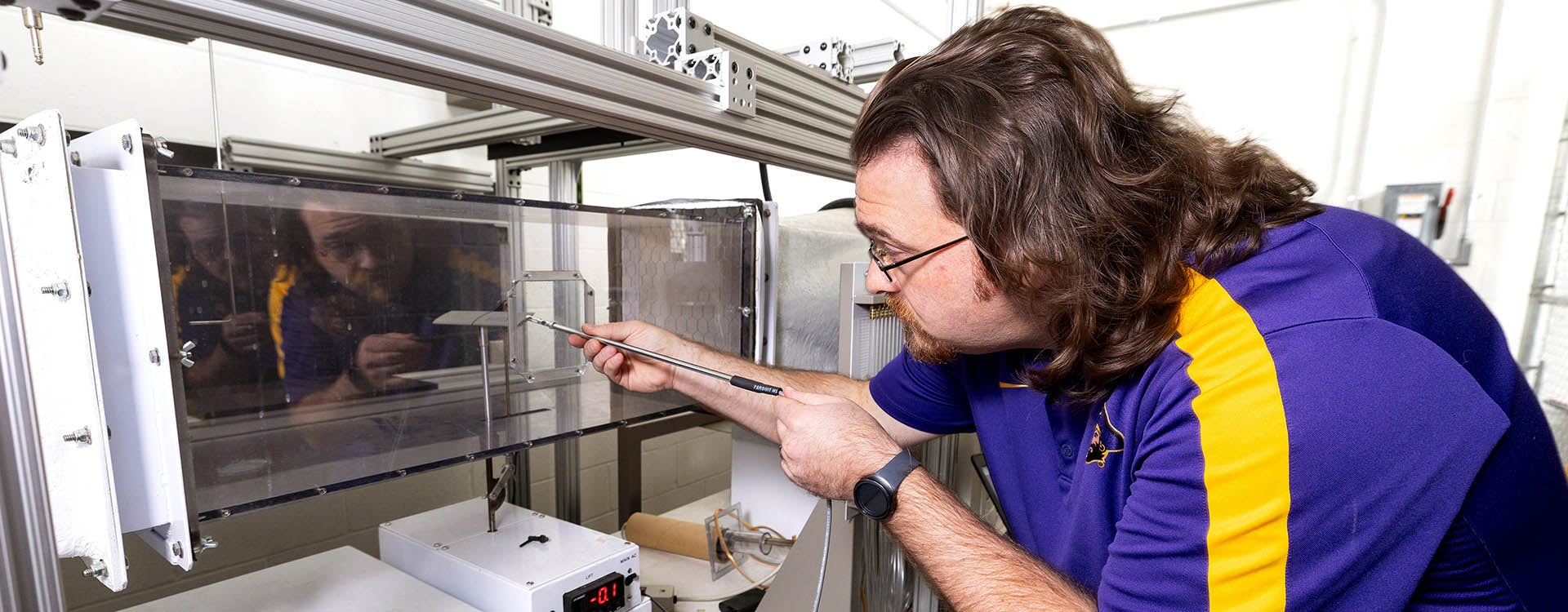TUNNEL VISION
ECU engineering student focuses on wind energy with project
Never underestimate the value of a good YouTube video.
Matthew Graham, an East Carolina University engineering student, came across one that put wind in his sails and sent him on a course toward a class research project to develop a more efficient way to harness energy from the wind.

ECU engineering student Matthew Graham uses a wind tunnel to record data on a wind turbine blade. Graham hopes to maximize the efficiency of the blade for use in vertical axis wind turbines.
That video, “Engineering with Rosie,” and a discussion with engineering professor Dr. Tarek Abdel-Salam got Graham thinking about the efficiency of wind turbines. He proposed a project as part of his undergraduate research class and gained support from Dr. Colleen Janeiro, an engineering teaching assistant professor in ECU’s Department of Engineering.
Graham is using the College of Engineering and Technology’s wind tunnel in the Science and Technology Building to test blades for vertical axis wind turbines (VAWT).
“I’m excited about it, and who doesn’t get excited over something they’re passionate about?” Graham said of the project. “And to get to do it for school, that’s awesome.”
Graham explained that most wind turbines are considered horizontal in that the blades rotate around a center rotor shaft that is parallel to the ground and wind direction. That creates problems if they are to be deployed off the North Carolina coast.
“The big thing is they have to be on floating platforms far enough out so they’re not an eyesore,” he said. “Imagine something big, 400 feet in the air, on a floating platform. It would be bobbing all over the place. The platforms would have to be so huge to support that.”
So, Graham is looking at VAWTs that have blades attached to the top and bottom of a vertical rotor shaft that is perpendicular to the ground and wind direction.
“They can operate in gustier conditions closer to the ground and have a much lower center of gravity, making them much more stable,” he said. “They also do not need to be facing the wind, as their turbine blades point in all directions.”
However, VAWTs have one major problem compared to traditional horizontal axis wind turbines.

A wind tunnel in the ECU Science and Technology Building provides data such as lift and drag on a wind turbine blade.
“They are not as efficient,” Graham said.
Graham is working to design a blade to increase the efficiency of VAWTs. As such, he is using the wind tunnel to gather readings on drag and lift for wind turbine blades. Maximizing lift while minimizing drag creates the most energy, but that occurs at just one point on the blade as it rotates around the vertical shaft of the turbine.
Graham is looking into active blade pitch control where the blade rotates as the wind moves it around the shaft, thus creating maximum efficiency at many points rather than just one point.
“If you can pitch the blade on its own axis as it’s rotating, you can keep it at that efficient angle as it’s rotating around,” he said, thus creating more energy from the wind.
The wind tunnel allows Graham to get real-world data, rather than just simulated data. He can then adjust the design of the wind turbine blade for maximum efficiency and compare that data to blades from traditional horizontal axis wind turbines.
“I love doing research, and I love a challenge,” Graham said. He envisions a time when wind energy plays a major role in the country’s energy needs.
“I would love to see vertical axis wind turbines all over the place,” he said. “As residential solar has become more popular, it is insanely easy to hook up a small wind turbine to an existing solar array in residential areas. The problem is you have to get them way up in the air. But I would love to see that. When we start getting wind turbines off the coast, I would love to see a diverse set of wind turbines. Vertical axis wind turbines deserve a place in that sector. There is a definite case for those if we can make them more efficient.”
Graham began his educational journey at Wake Technical Community College in Raleigh before transferring to ECU.
“ECU just made the most sense both financially and with the engineering program we have,” he said.
Graham would like to work in the clean energy industry. He graduates in May with a Bachelor of Science in engineering, with a concentration in mechanical engineering.
“It’s been a very quick two years,” he said of his time at ECU. “It has flown by.”
